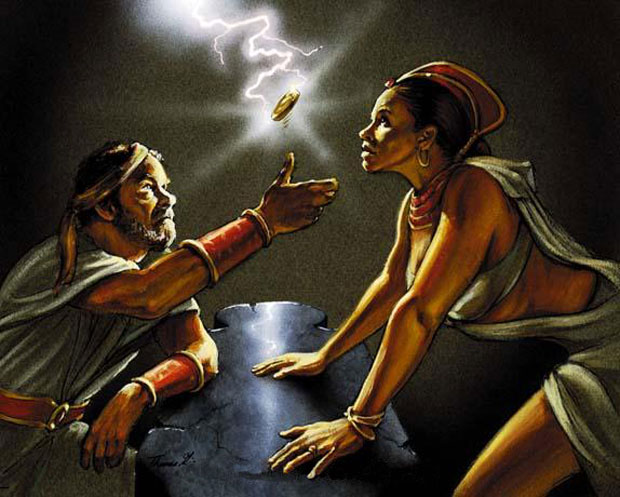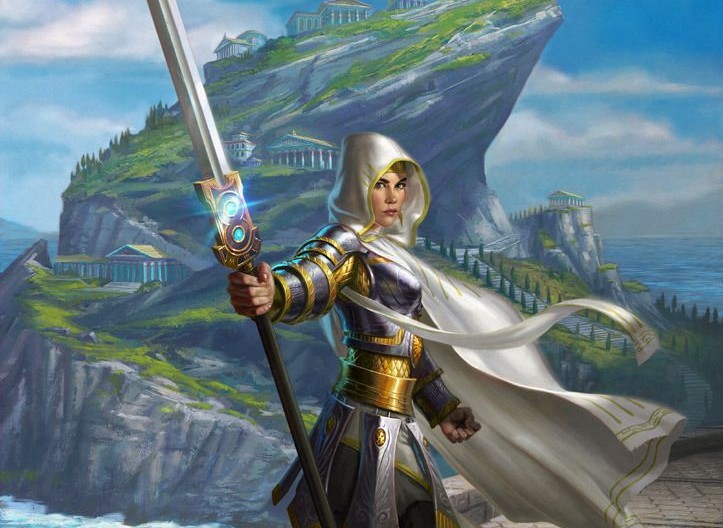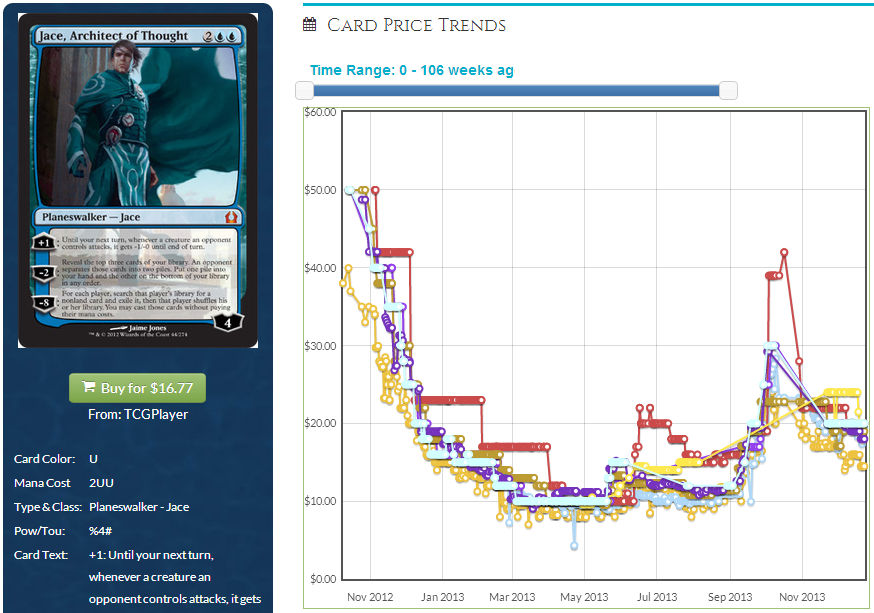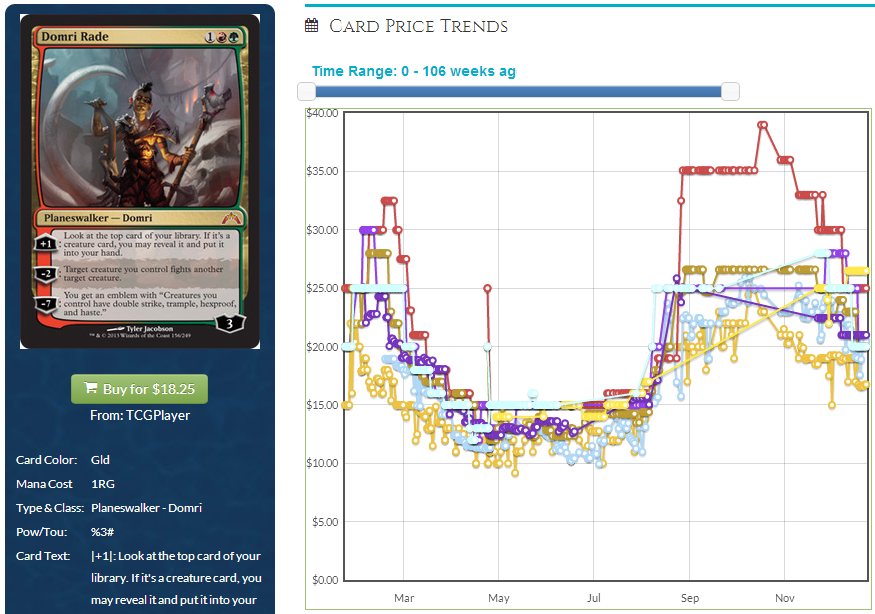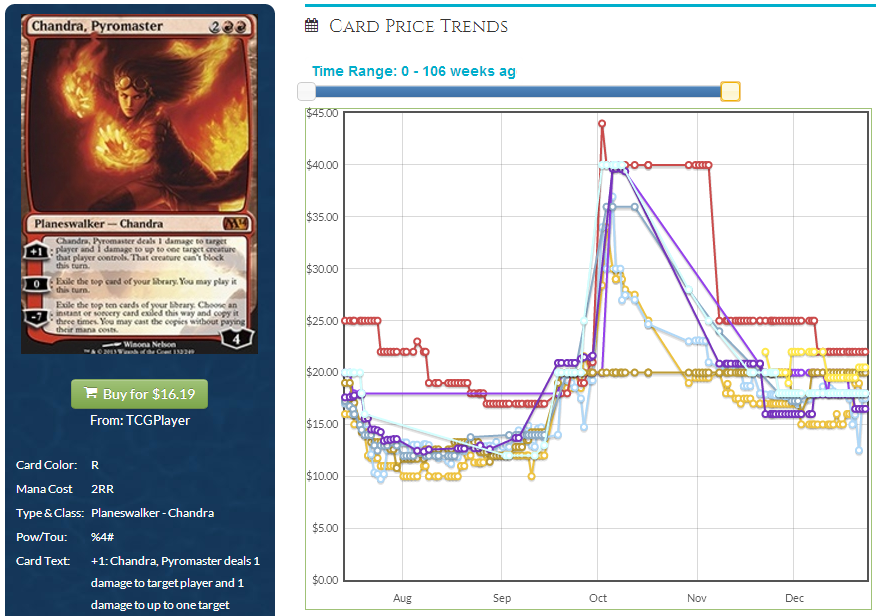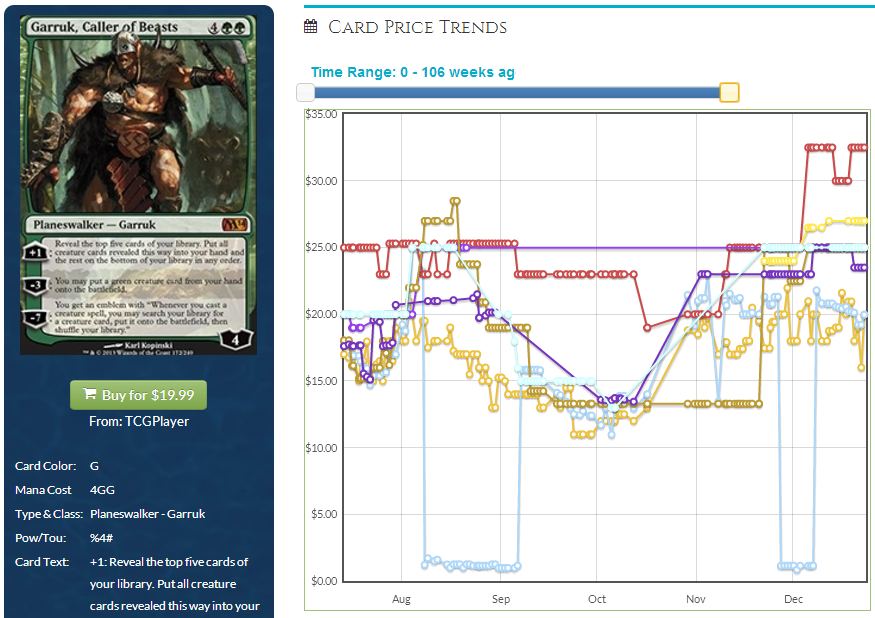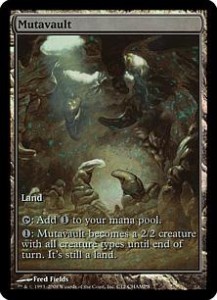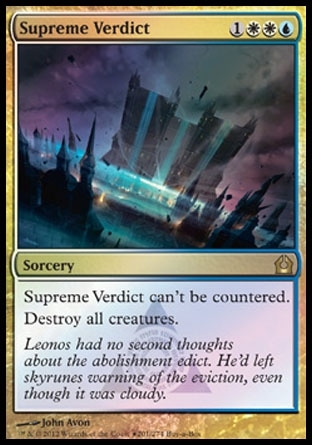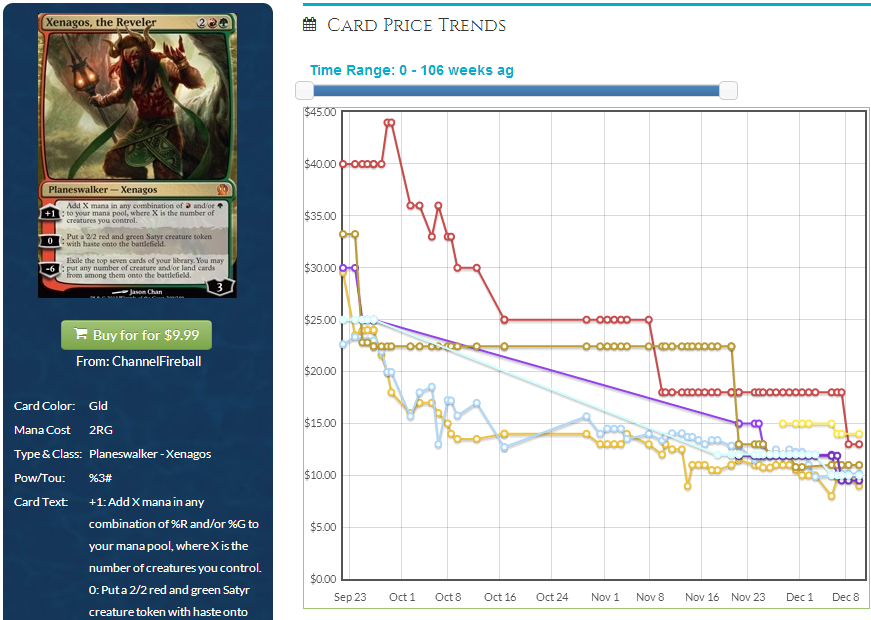By: Travis Allen
Over this past summer, I read Nate Silver’s book, The Signal and the Noise: Why So Many Predictions Fail – but Some Don’t. I mentioned it in an article previously as being an excellent book for anyone who is interested in the type of content that appears here weekly. I’m not the only one who enjoyed it either; multiple people on my Twitter feed proclaimed fascination with it upon release. Chas Andres (@chasandres) was a particularly vocal supporter, and ended up writing a piece or two over on SCG about some of the book’s content shortly after it came out.
Today I want to discuss what was to me one of the most interesting, informative, useful, world-view-altering portions of the book. The Bayesian Theorem, and specifically Bayesian interpretation, is so broadly applicable to every aspect of our lives (MTG included) that it’s difficult not to consider every day occurrences through its lens.
The theorem was developed by Thomas Bayes, a statistician and minister from the early 18th century. The work was published posthumously, and received a pretty lukewarm reception initially. It wasn’t until the topic was revisited some time later that it became considerably more popular, and is now a major component of statistics.
Here’s the basic idea: Everything is a probability. Nothing – nothing – is 100% guaranteed. New information we obtain allows us to more accurately predict what will happen, but we’ll never be completely, unquestionably certain.
Let me show you the equation in its simplest form. Don’t be terrified.
That isn’t so bad, is it? It’s just three simple letters a few times. (The book uses a slightly different equation, but the results are the same.) I’m not even going to force you to figure it out. I’m going to point you to the Wikipedia page, and if you’re curious about the math, it will do a far better job explaining it than I could. Instead, I’m going to explain it with some examples.
This first example I stole right out of Nate’s book. Imagine a woman going through a dresser drawer, and she finds a pair of panties that aren’t hers. Her first instinct is to assume her husband is cheating on her. That’s a pretty severe leap to make without any additional evidence though, isn’t it? If this woman had no reason to suspect her husband before, is it really appropriate to condemn him already? Someone without Bayesian interpretation may do that, but not this woman. She’s going to approach this with ~math~.
In order to get some numbers to plug in, she needs to do some guesstimating. The first thing she has to put a number on is what she thought the probability of her husband cheating on her was before she found the panties. This can be difficult, especially if you’re holding incriminating evidence in your hand. But she thinks rationally, and decides she had no reason to suspect him before this. She also happens to know that 4% of married spouses cheat each year. That seems like a good number to start with. So her prior expectation of her husband cheating on her – her “prior” – is 4%.
Next, she has to figure out the probability of the underwear being there assuming her husband is actually cheating on her. Basically she says to herself “If my husband is cheating on me, what are the odds I would have found this underwear?” He would probably be trying to cover his tracks if he was having an affair, so she wouldn’t expect to always find this incriminating evidence even if he was cheating. She decides to go with a coin flip – 50%. If he’s cheating on me, there’s a 50% chance I would find evidence like this.
Finally, what are the odds that this underwear is there if he isn’t cheating? Well, the number of reasons for strange panties in your house is pretty limited, and many of them are going to be quite suspect. Maybe he bought the panties for her as a gift, or received them as some promotional giveaway whilst walking through the mall, and forgot he put them there. Perhaps they’re his (no judgments.) Regardless of why, the chances of this underwear being there if he isn’t cheating are pretty small. She decides it’s maybe a 5% chance the underwear would show up if he isn’t cheating on her.
She then takes her three numbers and runs them through the equation. Her prior expectation of his cheating, 4%, the probability of finding the underwear if he is indeed cheating, 50%, and the probability of the underwear being there if he isn’t cheating, 5%. It spits out an answer of 29%. Her new expectation of his infidelity is 29%.
In a vacuum, that seems kind of low. She finds this women’s underwear, and it’s barely more than 25% likely that he’s cheating on her? How is that possible? It stems from the fact that she really didn’t expect he was cheating on her at all beforehand. If that prior expectation was higher, perhaps because he was working late all the time or being overly protective of his phone, then the end result would have been a lot higher than 29%.
Let’s try this out with a more on-theme example. Let’s try and figure out what the chances are that True-Name Nemesis is getting banned at the next B&R update in light of a new piece of information.
We’ll begin with our prior. Right now, without any additional knowledge, what do we think the odds are he’ll get banned? Well, they don’t ban cards in Legacy very often. We could just look at the total number of banned non-ante cards in the format as a percentage, but I feel that is a bit misleading in this context. People have reasonable suspicion TNN may get the axe, but nobody is eyeballing Lightning Bolt in the same way. Let’s say that right now, TNN is maybe 5% to get banned. 5% is a much greater chance than any random Legacy card, and simultaneously reflects Wizard’s proclaimed hands-off approach.
Now, we consider new information. How about this tumblr post from one Mr. Mark Rosewater? Hmm, that’s pretty damning. Look at the language he uses. “Well aware of the public’s feelings” and “will impact how we act in the future.” Make no mistake – that is severe word choice. He easily could have said something along the lines of “TNN is new and we want to give a resilient format like Legacy a chance to try to solve the problem first.” Instead, he made no attempt to indicate they are giving the format time to shake out. He acknowledged people hated it, and said they would react.
So, what’s the chances that Mark would say this if they are planning on banning the card? I would put it pretty high, say, 80%. There is really no stronger answer he could give here.
Finally, what are the odds he would say this if Wizards wasn’t planning on banning TNN? Well, Mark has been known to be purposefully misleading before. We’ll say there’s maybe a 15% chance he would use language this strong even if they weren’t thinking of banning it in the near future.
Given those three numbers – 5%, 80%, and 15% – our final probability of TNN being banned in the upcoming announcement is 22%. That may feel a little low, but remember our initial expectation of it being banned was only 5%. It jumped 17 percentage points after this announcement from Mark. That’s a big jump.
Perhaps you are more convinced Wizards is going to ban TNN, and your prior expectation without any additional information is not 5%, but 30%. With that single change in number, the odds TNN gets banned rises to 70%. That’s a pretty solid chance of him being banned.
These examples show you what happens when you utilize real numbers, but what I really want you to focus on is the underlying principle. When we discuss things that will happen in the Magic world, it’s always a probability. When someone says Genesis Wave or Threads of Disloyalty or Spellskite is going to jump in price, what they mean is “I believe, given the information I have, the probability of this card rising in price is high enough that I feel justified proclaiming it, and I’m betting that it will happen.”
Aside: Notice my use of the word “betting” there – speculation is really just informed gambling. You’re playing odds. They’re considerably better than casino odds, of course, but at the end of the day you’re putting money up against the chance of something happening.
You may not be aware of it, but you are probably using this principle frequently when you play the game as well. Imagine you’re playing against a control deck, and the board is empty. You cast a reasonable threat that will kill your opponent in a turn or two. Your opponent lets it resolve. Well, before you cast the spell, you were pretty sure he had a counterspell in his hand. After he let this resolve though, you swing way the other way – why wouldn’t he counter it if he could? You now feel pretty confident that he doesn’t have a counter. Then you pass the turn, he plays a land and passes back. You go to declare attackers, and he Downfalls the creature. Suddenly, you have once again found yourself pretty sure he has the counterspell. The reason he didn’t counter the threat last turn was that he didn’t need to.
See how with each piece of information, you update your expectation of what your opponent is holding? All (decent) players do this. Recognize this, and try extending the practice into more areas of your life. Use the concept, and in situations where you feel you have good numbers, maybe even use the equation. You’ll find you rush to conclusions far less, are more equipped to plan for contingencies, and in general have more reasonable expectations of what may come.
All of the predictions in my article last week were formed based on frequent Bayesian interpretations. Every time new product is spoiled, an announcement is made (or not made,) or someone from Wizards says something, I factor that into my expectations of an event, and see how it influences the probability. I would be lying if I said I explicitly used numbers, but I definitely find myself mentally ballparking percentages all the time.
Holding to Bayesian interpretation will also help you be more objective. Say you hold some belief that you are very certain about, perhaps 99.99% sure of. A single piece of evidence to the contrary is not going to sway you far from that belief. But if you remove your personal prejudice from the issue and fairly factor in each new piece of information, you may find that your previous rock-solid belief is now considerably less so. Holding a firm belief is not foolish, but doing so in the face of bountiful evidence certainly is. Don’t be that guy. Be the guy willing to learn and grow.
There’s a lot more information about Bayesian statistics out there. If this tiny taste I’ve given you piques your interest, I highly encourage you to do some more reading. In the meantime, go forth and be probabilistic!
- Genesis Wave spiked on Tuesday afternoon, and as I write this, the cheapest copy is $6 on TCGPlayer. If you have any, sell now. Yes, the card could end up more expensive, but it’s far more likely it doesn’t. (Probability and the Greater Fool Theory all in one!)
- With Genesis Wave spiking, Primeval Titan is on the edge. There’s been chatter about him online lately, paired with a slow rise over the last few months. He’s going to be in any deck with Wave. It won’t take much to push him over the edge at this point. He’s not going to be $25, but $12-$18 seems pretty reasonable.
- I don’t have any specific results to point to, but I like Threads of Disloyalty. It’s been rising for months, it’s always been floating around Modern, it only has one printing, and continues to get better in the face of awesome small creatures. I doubt it’s going to be bought out tomorrow, but I wouldn’t hesitate to grab copies where you can.
